

Knowledge
Terrestrial Television (Over The Air ~ OTA)
Terrestrial television is a mode of television broadcasting that does not involve satellite transmission or underground cables, typically through the atmosphere from a transmitting antenna. The term is more common in Europe, while in Canada and the USA it is referred to as OTA broadcast television. Terrestrial television broadcasting dates back to the very beginnings of television as a medium itself with the first long-distance public television broadcast from Washington, D.C., on April 7, 1927.
Ultra High Frequency (UHF)
UHF designates a range of electromagnetic waves with frequencies between 300 MHz and 3 GHz (3,000 MHz). Also known as the decimetre band or decimetre wave as the wavelengths range from one to ten decimetres (10 cm to 1 metre). Ultra high frequency UHF and VHF are the most commonly used frequency bands for transmission of television signals. Modern mobile phones also transmit and receive within the UHF spectrum. UHF is widely used by public service agencies for two-way radio communication, usually using narrowband frequency modulation, but digital services are on the rise.
Very High Frequency (VHF)
Very high frequency (VHF) is the radio frequency range from 30 MHz to 300 MHz. Common uses for VHF are FM radio broadcast, television broadcast, land mobile stations (emergency, business, private use and military), long range data communication with radio modems, amateur radio, marine communications, air traffic control communications and air navigation systems.
Advanced Television Systems Committee (ATSC)
ATSC Standards are a set of standards developed by the Advanced Television Systems Committee for digital television transmission over terrestrial, cable and satellite networks. The ATSC standards were developed in the early 1990s by the Grand Alliance, a consortium of electronics and telecommunications companies that assembled to develop a specification for what is now known as HDTV.
If you already own a relatively new LCD, LED or Plasma TV it will most likely have a built in ATSC digital tuner as well as a NTSC analogue tuner, this means the TV is OTA ready to receive free digital TV Broadcast.
National Television System Committee (NTSC)
NTSC is the analog television system that was used in most of the Americas. The first NTSC standard was developed in 1941 and had no provision for color. In 1953 a second NTSC standard was adopted, which allowed for color television broadcasting which was compatible with the existing stock of black-and-white receivers. NTSC was the first widely adopted broadcast color system and remained dominant until the 2010s, when it is gradually being replaced with different digital standards such as ATSC and others.
OTA Do's and Don'ts
Below are some helpful examples of Do's and Don'ts for OTA TV. The Before pic is an example of a poorly installed and configured antenna system in the GTA. The original installation was not able to provide reliable reception leaving the customer frustrated and unsatisfied after making a significant investment. In the After pic the antenna installation was completely reworked to RSC Standards, resulting in great reception and a satisfied OTA user. Don’t be fooled by sales tactics and gimmicks, go with the pros and get it done right the first time with RSC.
BEFORE RSC
poor reception
no system control
no preamp
two ClearStream 4's
AFTER RSC
great reception
full rotator control
preamp installed
one ClearStream 4
RS Communication 2022
info@rsctvantenna.com
(416) 833-3658
RSC
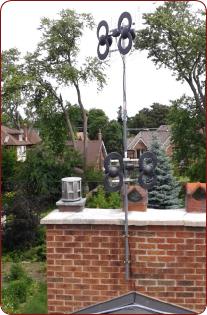
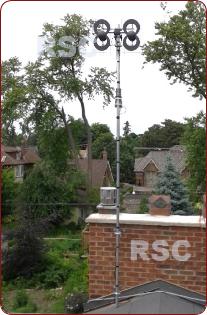
Installation Tips
Some simple installation tips for a quality OTA System.
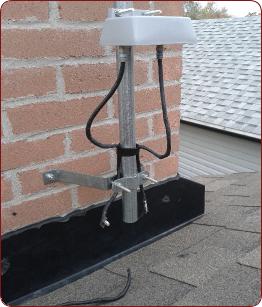
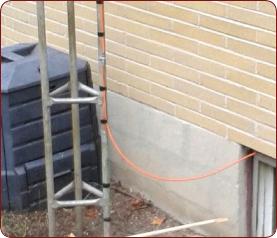
Exposed connections
no weatherproofing.
Avoid entry thru
window frame.
Entry point should be sealed.
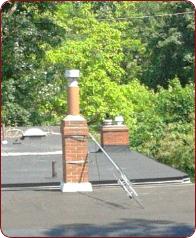
At RSC we avoid straps to anchor a mast, as you can see why.
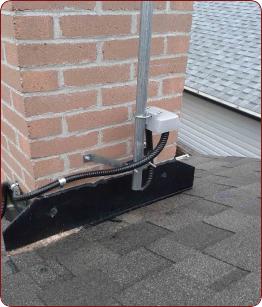
Coax cable protected in metal flex conduit.
Look what a squirrel can do to a coax cable, they love to chew.
Some Questionable Installations
On our travels we have come across some questionable installations, keep in mind yours does not need to look like this.
The most inexpensive way to confirm if OTA TV will work at your location is to schedule a RSC Reception Test...
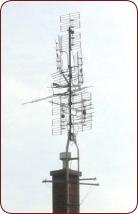
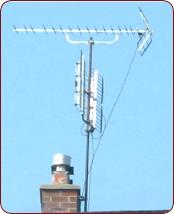
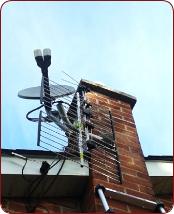
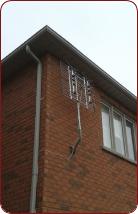

Schedule a Reception Test
professional installations